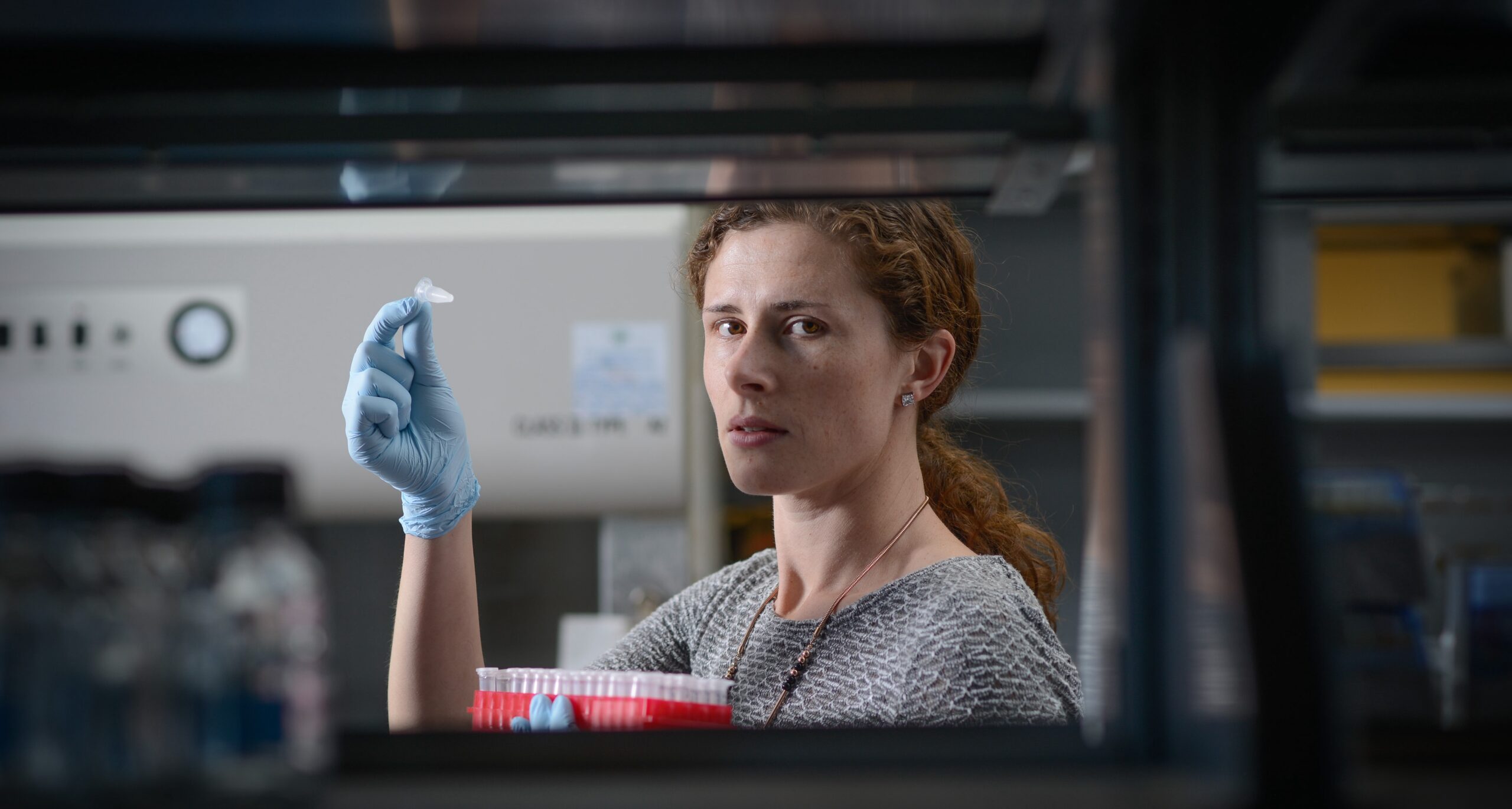What You Need to Know About SM

Cavalier King Charles spaniels (CKCS) are one of the most popular dog breeds in the world and have seen a recent surge in popularity in the United States. The breed standard, drawn up in the 1920s, has a small stature and affectionate personality that make them ideal pets. Unfortunately, many of them also suffer from two conditions affecting the skull, brain and spinal cord.
Due to the breed’s distinctive head shape, it is estimated that 95 to 99% of CKCS have a condition known as Chiari-like malformation (CM). This skull malformation results in a mismatch in size between the brain and skull, frequently with no serious consequences. However, in severe cases, the lack of space within the skull means the cerebellum, a portion of the brain, crowds the opening known as the foramen magnum, through which the spinal cord normally exits from the skull. Normally, the brain and spinal cord are bathed in a fluid called cerebrospinal fluid (CSF) that flows back and forth in a space around the spinal cord. The crowding that occurs at the foramen magnum creates turbulent flow in the cerebrospinal fluid, which in turn can result in accumulation of free fluid within the spinal cord, a condition called syringomyelia (SM). Together, CMSM can be asymptomatic but can also lead to pain, phantom scratching, and various other clinical signs that will be discussed in greater detail. The following sections highlight clinical signs, diagnosis, and treatment of CMSM.
Clinical Signs
CMSM is a serious, progressive condition that is associated with a wide range of clinical signs. The most commonly reported sign is “phantom scratching,” meaning the hind paw scratches towards the head and neck but does not make contact with the skin. Other signs include neck pain, collar sensitivity, crying when lifted, exercise intolerance, reluctance to play, head shyness, pain on defecation, and rubbing of the face, neck, or ears. Typically, clinical signs appear between 2 and 6 years of age; however, some cases have reported signs as early as 6 months. Because many of these clinical signs resemble other conditions (e.g., allergies, flea bites, disc disease), they can go unrecognized or be challenging to diagnose. Additionally, dogs can have CMSM without showing any clinical signs.
[give url=”https://securelb.imodules.com/s/1209/giving/plain.aspx?sid=1209&gid=214&pgid=3813&cid=6343&bledit=1&appealcode=LB&sort=1&dids=9284″ headline=”Live for Love” subheadline=”Cavaliers are known for being full of life. Let’s make it longer.” ]
Progression of CMSM is variable in CKCS. Some dogs may remain asymptomatic their entire lives. Those that show signs might not do so until later in life or might not experience worsening of symptoms. For others, the signs can quickly and drastically worsen. For example, it is common for phantom scratching to precede signs of pain.
Diagnosis
Magnetic Resonance Imaging (MRI) is the only way to diagnose CMSM in CKCS definitively. Though MRIs can be expensive ($1500-4000 depending on location), we offer limited low cost screening MRIs associated with research into this condition. Note that anesthesia is required during MRI procedures to ensure that dogs remain still. Routine blood work and physical examinations are required to make sure dogs are healthy enough for anesthesia.

Treatment
The ultimate goal of treatment is to alleviate clinical signs. Thus, treatment is not recommended for dogs without clinical signs. Treatment options for dogs with clinical signs include medications and surgery. The most common medications treat pain and itch and reduce the rate of CSF production.
Surgical treatment is reserved for severe cases that have not improved with medications. The most common surgical procedure performed is called caudal foramen magnum decompression or suboccipital decompression. The surgery involves removing a portion of the back of the skull to create more space for the brain, thus reducing pressure. Due to the complex and technical nature of this surgery, this procedure must be performed by a board-certified veterinary neurologist or surgeon. Surgical treatment is expensive, but studies have shown that clinical signs often improve. However, some dogs continue to show signs of CMSM and require ongoing medications after surgery or they can have a recurrence of the disease due to scar tissue build-up. Nonetheless, surgical options are improving with new techniques and the use of innovative materials to reduce the build-up of scar tissue.
Current Research at NC State
Dr. Natasha Olby’s laboratory is collecting DNA samples on CKCS with MRIs for a large genetic study. The purpose of this study is to identify specific genetic causes for SM and associated pain in CKCS in order to provide breeders with more information to help reduce the widespread incidence of SM in CKCS. For more information regarding this study please click here.


